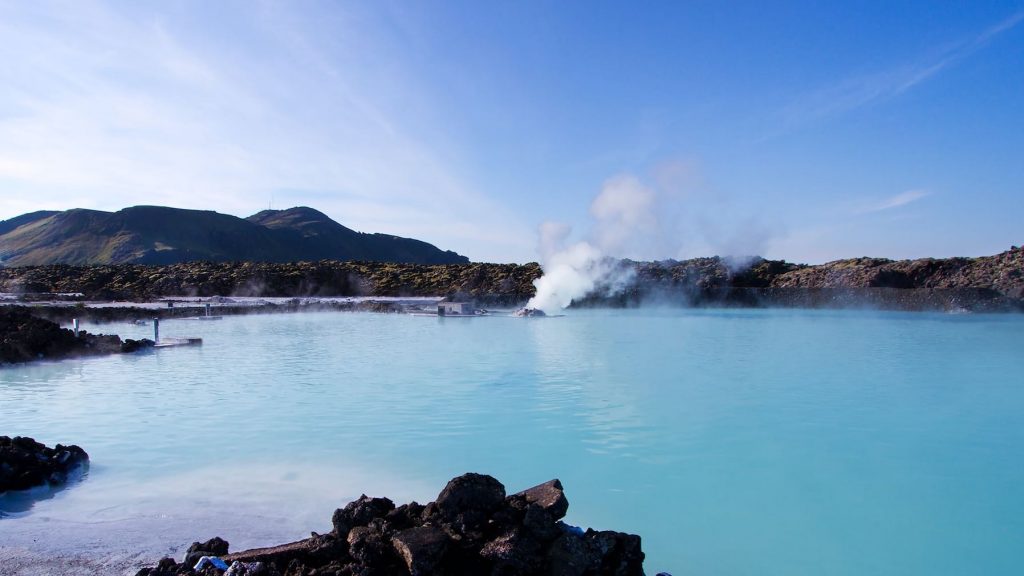Are heated pools the future of surf parks? One company is betting on it

The use of geothermal energy could eventually heat all pools – plus their surrounding facilities...
As Marcus Cintas was enjoying a chilly, wintry session at Kelly Slater’s pool in California, he couldn’t help but wonder if the teeth-chattering cold was worth the significant sum of money it cost to ride the wave.
“The night time experience [at Kelly Slater Wave Co.] was different, fun, and challenging,” said Cintas. “But my overall takeaway was paying USD $4k to freeze in 40-degree [fahrenheit] water wasn’t that rad.”
Cintas runs a company that brings sustainable energy sources to wave pools. He uses his experience in the Lemoore pool as an analogy for his business theory in the area: wave pools need to focus on the customer experience or their popularity could wane.
According to Cintas, a big part of improving customer experience is by heating pools – something no one in the space is currently doing.
Lemoore in Winter is cold. At $500 (avg) per wave, it makes one wonder if there’s a more attractive winter surf option out there for wave pools. One company is banking on this heated pools concept as the next big advancement.
But is heating a pool necessary? Isn’t it a waste of energy?
Earth Energy Geo is bringing an eco-friendly heating and cooling solution to the wave pool industry: geothermal energy.
“Not only is geothermal the most cost-effective type of heating, but it’s completely renewable energy, locally sourced, and provides real ROI for operating pools,” said Jay Egg, President of Egg Geo, who has been integrated into the Earth Energy Geo team.
“These wave pool projects use so much water, energy, and natural gas,” added Marcus Cintas, Managing Director of Earth Energy Geo. “[With geothermal energy] we can eliminate evaporation from the cooling methods and have a net positive relationship with the wave pool and water.”
“For example, one Surf Lakes project we are working on will evaporate 50M gallons of water per year from all the cooling of the buildings. By eliminating the old traditional methods and using geothermal, we eliminate that evaporation. This was quite eye-opening to the local water authority who was initially giving the developer major push back on their project, and ultimately, one of the only reasons they got the green light.”
Jay Egg, President of Egg Geo
So, how does geothermal energy work?
Within the earth’s core, there is a slow decay of radioactive particles that produces geothermal energy. The resulting heat permeates through the planet’s mantle all the way to the crust. By tapping into this heat just below the surface, the energy can be harnessed, creating a renewable energy source that can be used for heating and cooling buildings, as well as controlling the temperature of the water. The process produces zero carbon emissions and burns no natural gas.
“There are about 30 different good ways to enable a geothermal exchange system,” said Egg. “The trick is knowing how to lay that out. We help to identify the surface water exchange, wells, and using infrastructure that is already [on site]. The first thing we look for is wasted heat in the local area. It is remarkable how many different ways it can be done.”
“By eliminating the outside cooling towers and condensers, which are massive energy users and evaporate ridiculous amounts of water, we turn a project into a net positive water consumer,” explained Cintas. “For example, one Surf Lakes project we are working on will evaporate 50M gallons of water per year from all the cooling of the buildings. By eliminating the old traditional methods and using geothermal, we eliminate that evaporation. This was quite eye-opening to the local water authority was initially giving the developer major push back on their project, and ultimately, one of the only reasons they got the green light.”
Currently, no wave pools around the world are utilizing geothermal energy to heat their pools or facilities. (Editor’s Note: Wave Park in South Korea heats its pool via heat generated nearby through refuse burning and carbon capture.) Earth Energy Geo has several projects in the works in Canada, Texas, Atlanta, and Arizona, among a few others that cannot yet be named.
It’s worth noting that while there are methods to use geothermal energy to create electricity, Earth Energy Geo’s business model of applying the energy source to surf parks only concerns the heating and cooling of the pool and adjacent buildings. The pool operations still require electricity, which, depending on the project, would be powered by solar energy, energy storage, and a microgrid to maximize site efficiency.
According to Egg, surf parks are behind the curve as far as using renewable energy. Swimming pool facilities, for example, have already been accessing geothermal energy to manage the temperature at their pools and buildings with great success.
“[A pool in Florida] was spending USD $60k per year on gas to keep the pool warm in the winter,” said Egg. “When they went to geothermal heat pumps, they eliminated the $60k gas cost and all carbon emissions. They traded that for a USD $15k electric bill, netting $45k and decarbonizing the facility.”

So, if there is an eco-friendly, cost-effective way to provide heating and cooling for pool facilities that also makes the pool warm, why isn’t everyone using geothermal energy?
Egg points to the upfront costs for infrastructure that can be intimidating. He estimates that a traditional gas-powered furnace system costs a quarter of the price of a geothermal system installation. But it’s only a matter of time before that investment pays dividends.
Earth Energy Geo has a solution to the barrier up front costs. They can pay for the installation of the energy facilities themselves, becoming an energy service provider for the client in exchange for a fee that is far less than an electric bill.
“We are able to do the whole design, build, operation, maintenance, and financing,” said Cintas. “If a client chooses this route, we have a performance guarantee that gives a fixed payment every year, and then the developer can take that off their financing needs. Immediately they will see the savings because we pay for the setup. Each wave park generates its own geothermal energy and sells it to the site. It can even be upsold. And if the client wants to pay for the system themselves, we try to get payback [on the investment] to about seven years.”
In the US, for example, the government provides a 40% tax credit for the cost of the system that can be accessed by the client, plus a tax deduction of USD $5 per square foot of building space
According to Cintas, the biggest challenge is educating the right stakeholders about the benefits of geothermal energy. And the benefits do not stop at the reduced environmental impact and energy bill. In the US, for example, the government provides a 40% tax credit for the cost of the system that can be accessed by the client, plus a tax deduction of USD $5 per square foot of building space.
“Now we have this decarbonization effort and the bottom line is, if you have a carbon footprint, you have to report it,” said Egg. “When you decarbonize you become immune from catching any grief for being a polluter. You have to do it now or do it later. And that means a lot to investors. They know it’s on the horizon.”
If heated wave pools are the way of the future, geothermal energy seems like the clear path. The Earth Energy Geo team points to leading energy companies, like Schlumberger, including geothermal energy in their strategic plans as the smoking gun that this energy solution will one day become ubiquitous.
Other industry stakeholders, such as The Wave Bristol Founder Nick Hounsfield, find this technology intriguing as well.
“We have looked at deep geothermal and have watched closely at what is being developed in Cornwall,” said Hounsfield. “In the right place, there is a potential for energy and hot water from this type of technology solution. Free energy and heated waves are a very compelling option, especially in winter.”

So geothermal is a solution, but the question remains if wave pools will begin to adopt it and be successful. Will heated pools have a significant effect on the bottom line of a surf park? Cintas thinks so.
“If we have to travel to some landlocked wave pool and pay a bunch of money per hour, do you think we really want to freeze our marbles off?” said Cintas. “We figured out that at least 75% of people that are going to be enjoying the pool (a project location that cannot yet be named) are going to be beginners. It matters to them.”
“Hardcore surfers will say they don’t care, but honestly they are lying,” added Cintas. “If I am going to travel to a destination and pay a couple hundred bucks to surf for an hour, I would go to Costa Rica. I want warm water, perfect waves, and to feel like I am getting every penny I spend in an amazing experience.”
As wave pools proliferate around the world and simply accept that the water temperature will vary by season, like the ocean, perhaps pools that sustainably heat their water will gain a leg up on the competition. As Cintas points out, this certainly will be more attractive to the fair weather surfer, and that could be the difference between sink or swim for the financial viability of the surf park.
Top Image by Andrew Shield
Related Coverage
